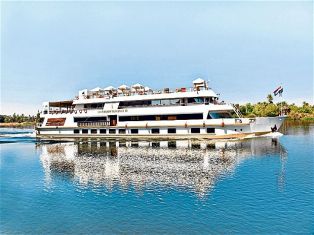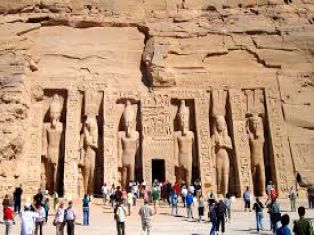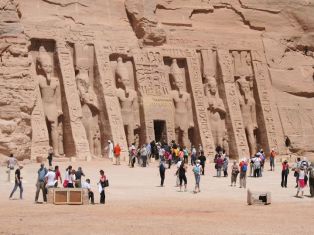Phiela Temple
Phiela Island is an island in the middle of the nile river, one of the ancient fortresses on the southern borders of Egypt, it had phiela temple and moved from its original place on the island of phiela and was assembled on the island of Egilika. The name of Phiela or phielay refers to the Greek language, which means the granule or granules while the Arabic name (Anas Alwogoud), as for the legend of Anas in the stories of one thousand and one nights (Alf Leila W Leila), the name of ancient Egypt and Coptic is Belak; its meaning the border or the end because it was the last border of Egypt in the south. The temple of phiela was built for the goddess ISIS; the temple gained a great standing, especially from followers of that worship and revived the story of Mout and resurrection of Osiris. The great temple was built in the 3rd Century BC, followed by the temples of Amenhotep and Arsenovis. The temple of Hathor is the last of Ptolemaic monuments and was completed in 116 BC by Erogets II, other Ptolemaic added inscriptions to the temple. From Egypt it spread the worship of god ISIS to Greece, Rome and throughout the empire, to the great control the worship of the goddess Isis on Phiela Island, this led to the extension of that worship for many centuries in defence of the decree of emperor Theodosius, which was issued in 391AD to impose the Christianity on the empire. In 550 AD, during reign of Justinian, Christianity reached the island of Phiela. A new era began in its history and a new Christian community was established on the island, the hypostyle became suitable for the practice of the new religion. The stones were moved from some monuments to the construction of Christian churches on the island. A new village was built around the temple of phiela. When Islam came to Egypt, Phiela was considered a legendary fortress, as in the stories of (Alf Leila w Leila) and gained the name of Anas Elwogod as a hero name of one of the stories. The temple of phiela was flooded by the water of the nile river, it was divided and re-assembled on the island of Egilika, about 500 meters from its original place on the island of phiela, many temples were standing on the island of phiela, perhaps the oldest is the temple of Tuthmosis III (1490: 1436) BC, in the fourth century BC; king Nakh Nibf (378-341BC) Built a great temple. Ptolemy Philadelphia (3rd century BC) built his huge temple on the remains of the latter, followed by many of Ptolemaic and roman kings until the island of phiela was crowded with temples, the most famous is the so-called Pharaoh’s chamber.
recommended tours

Private Half - Day Tour: Philae Temple - Unfinished Obelisk & High Dam



